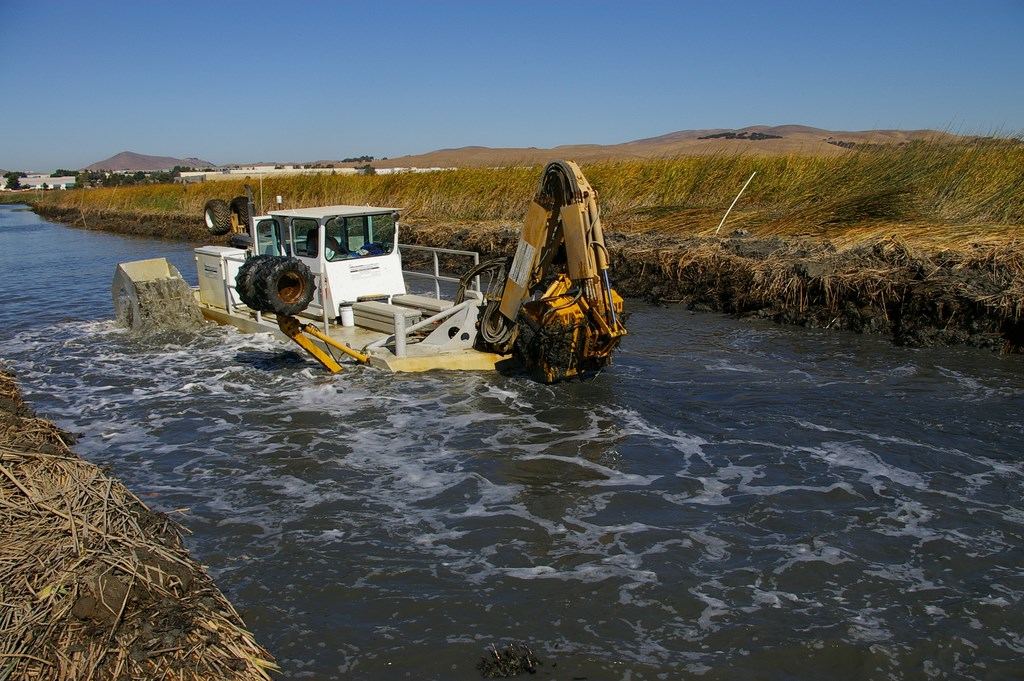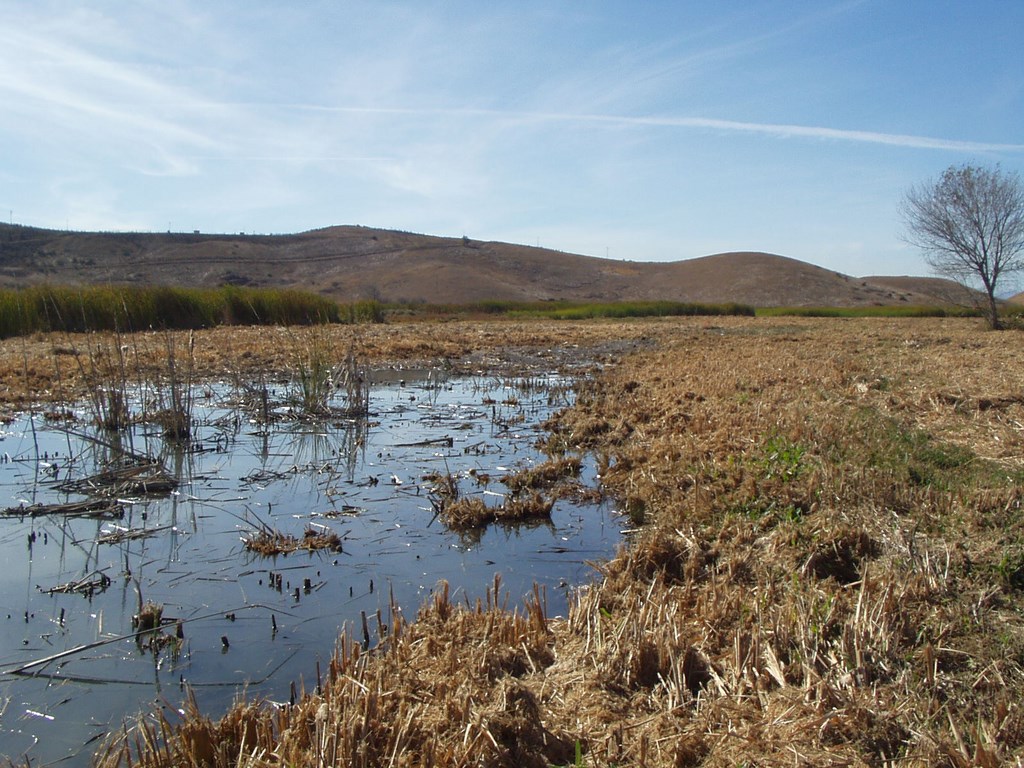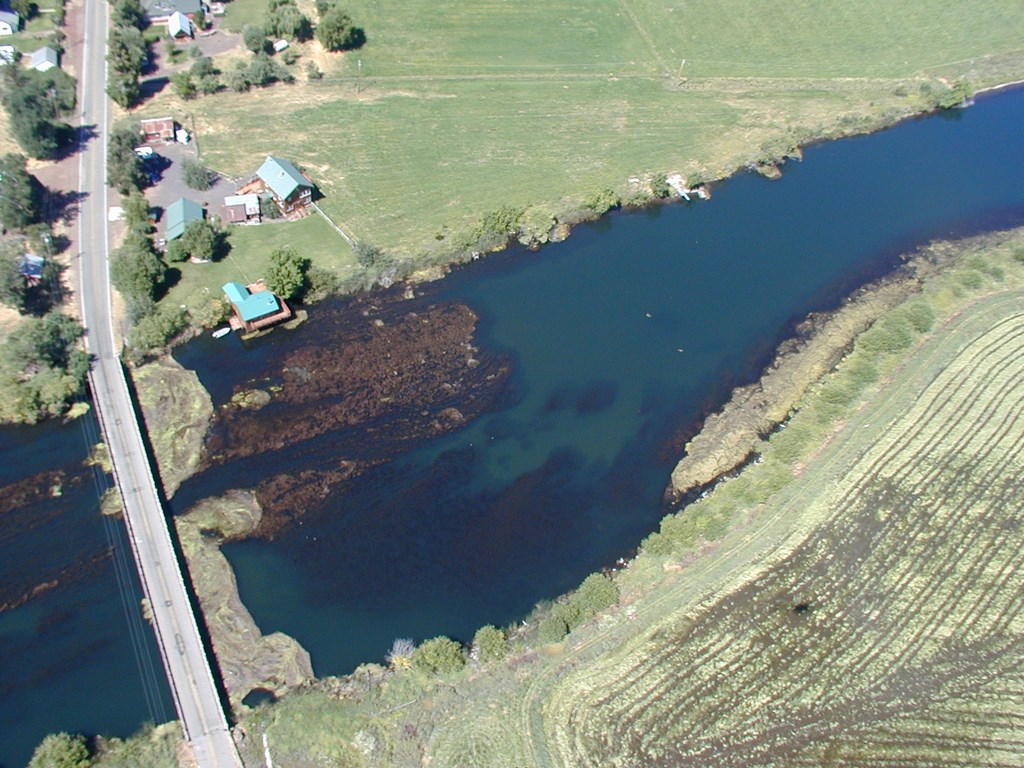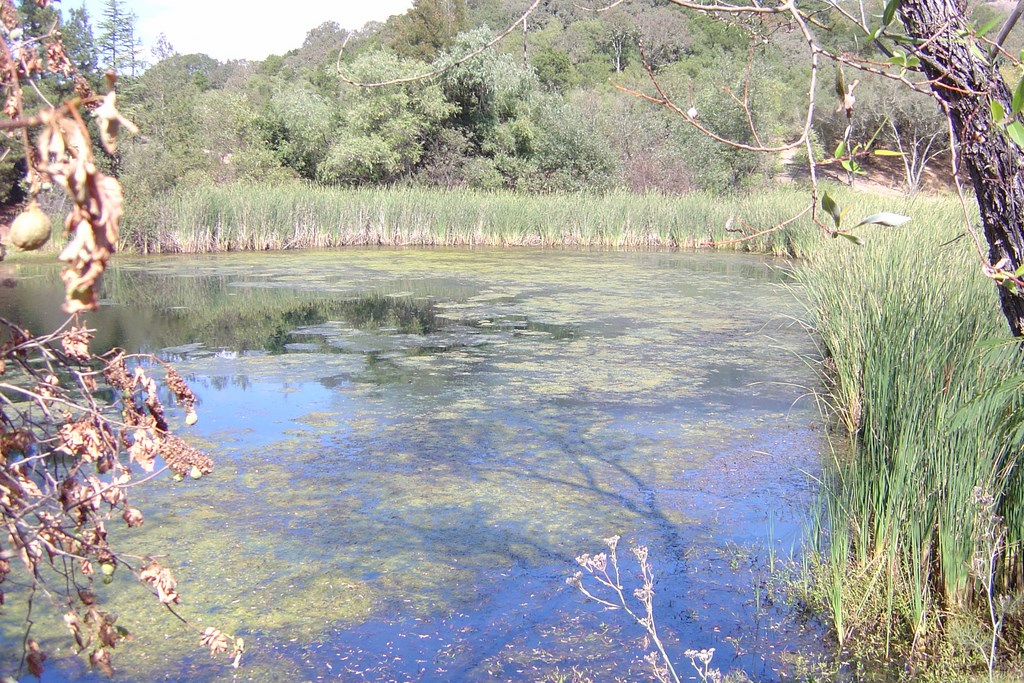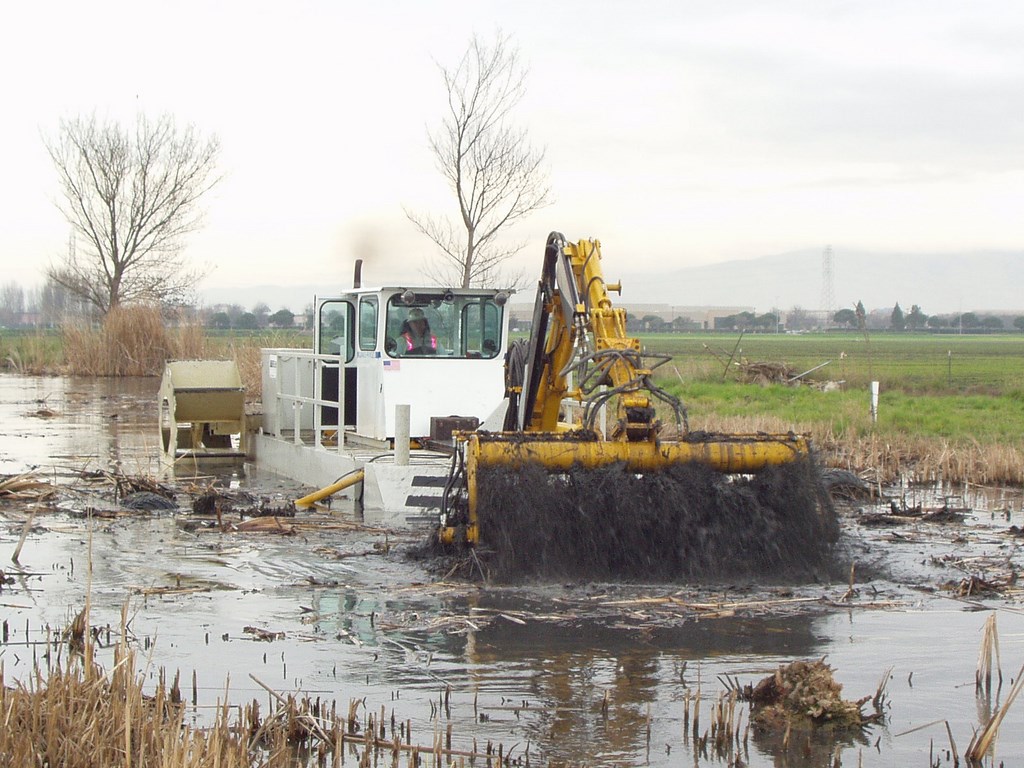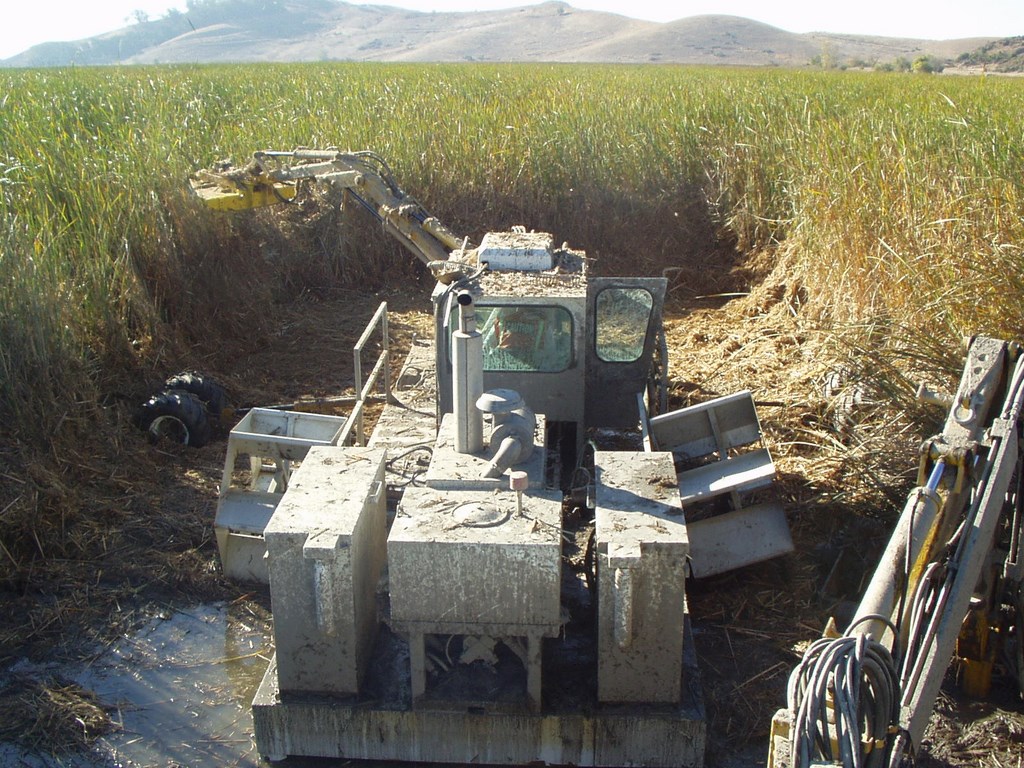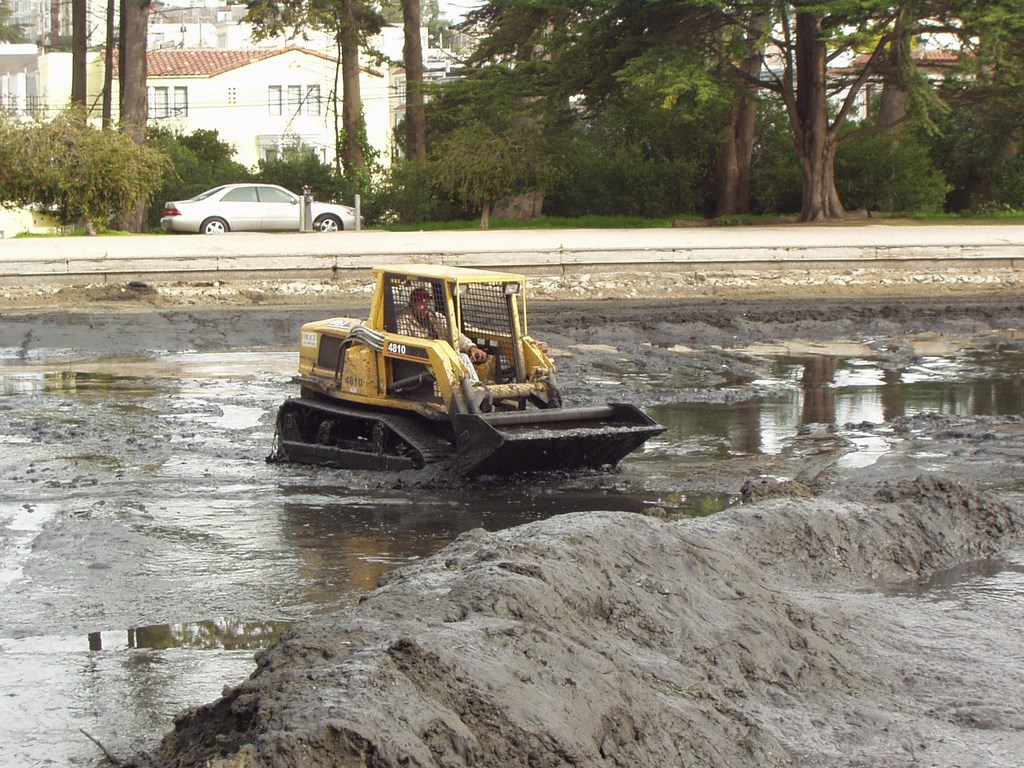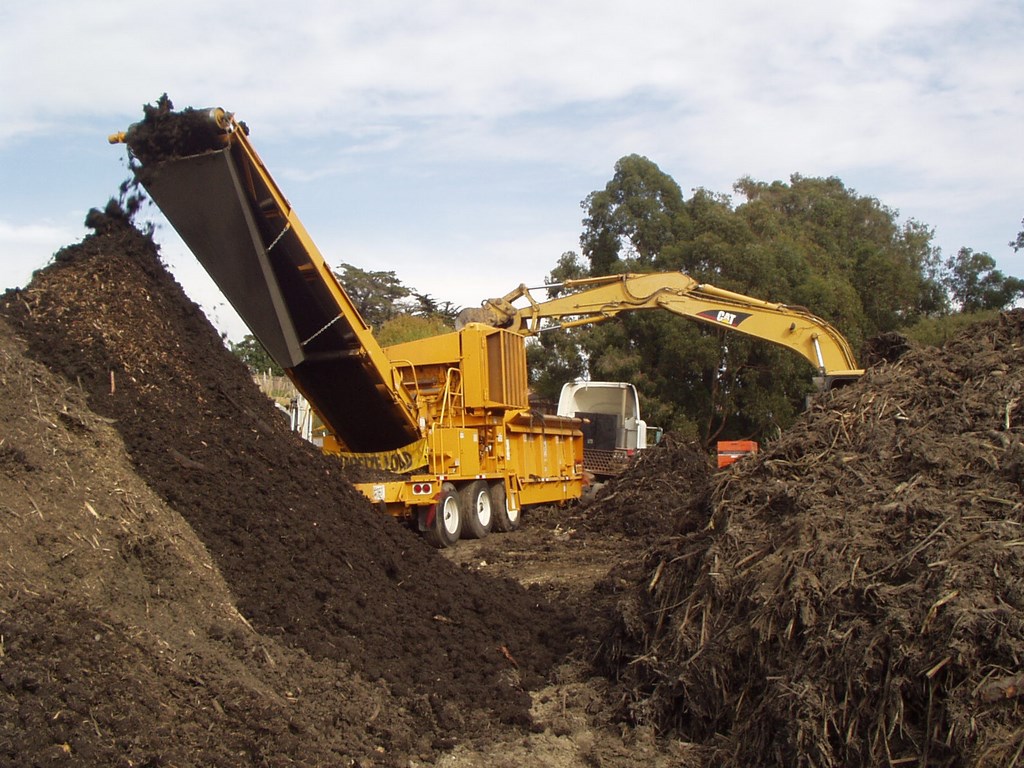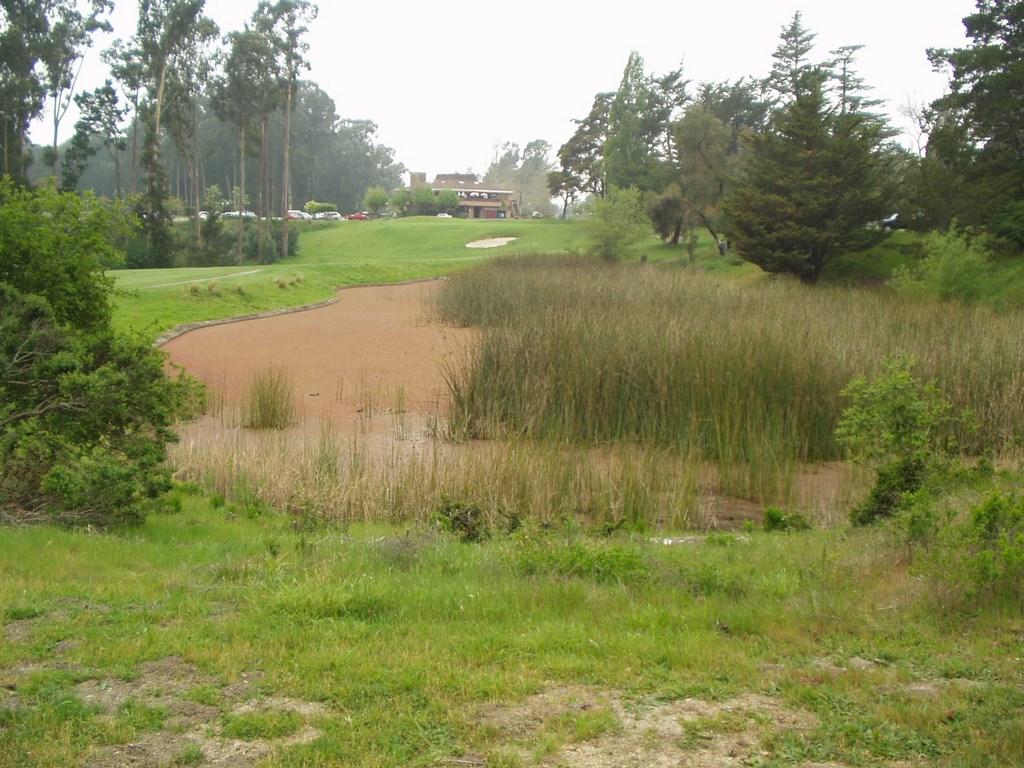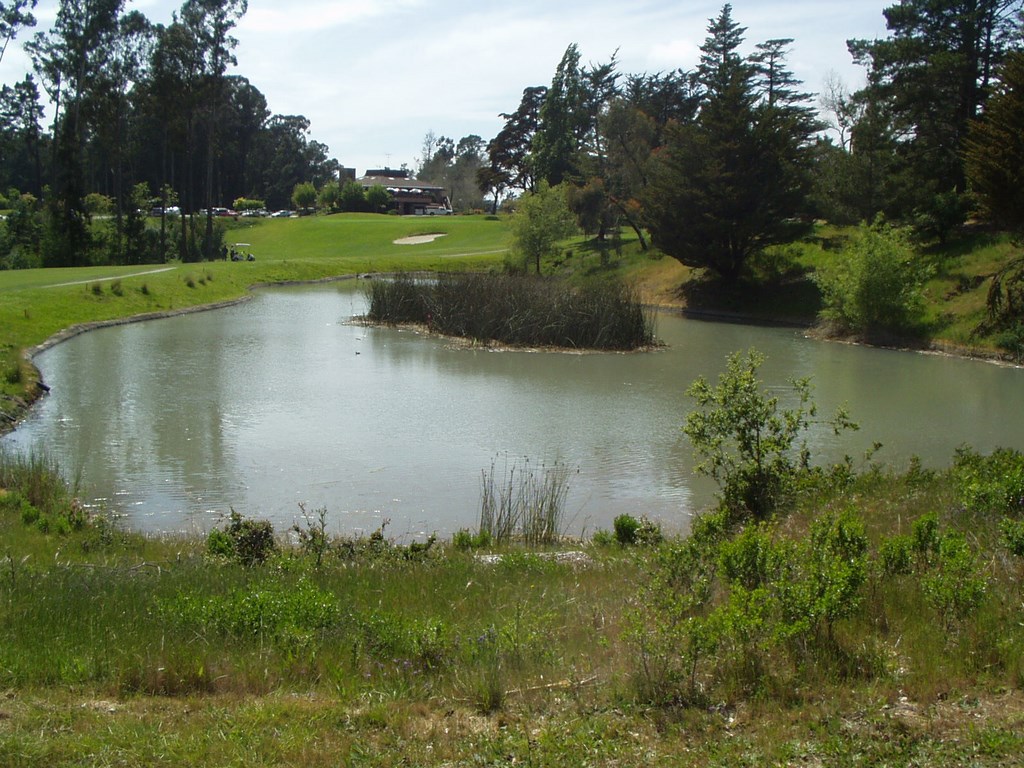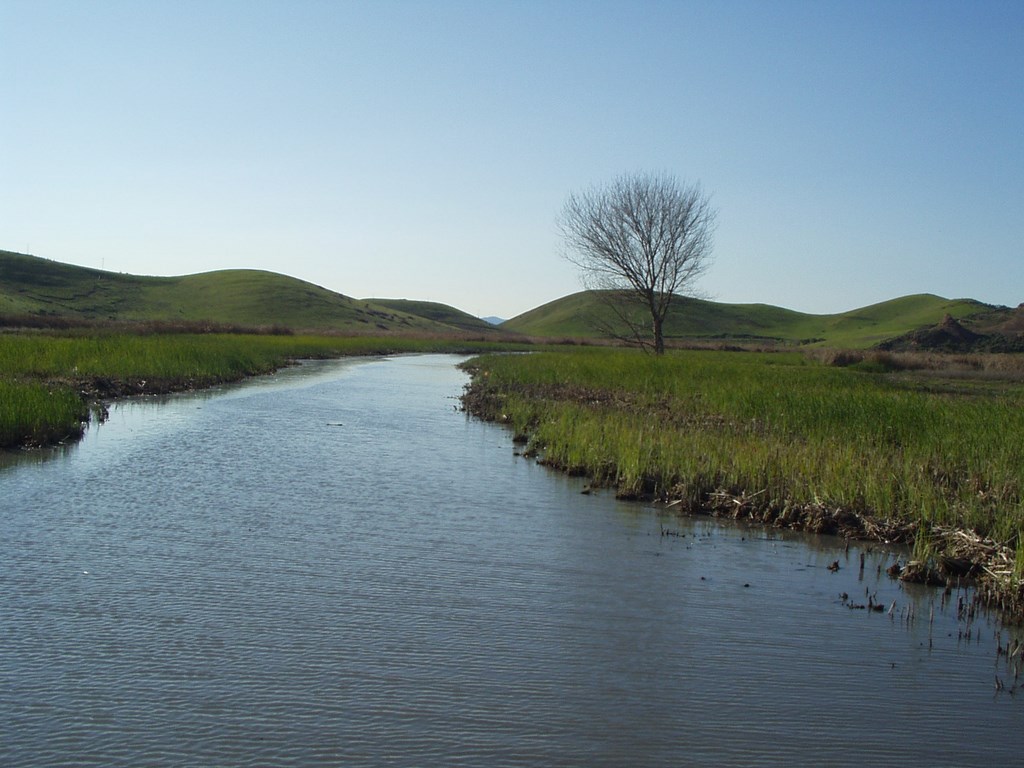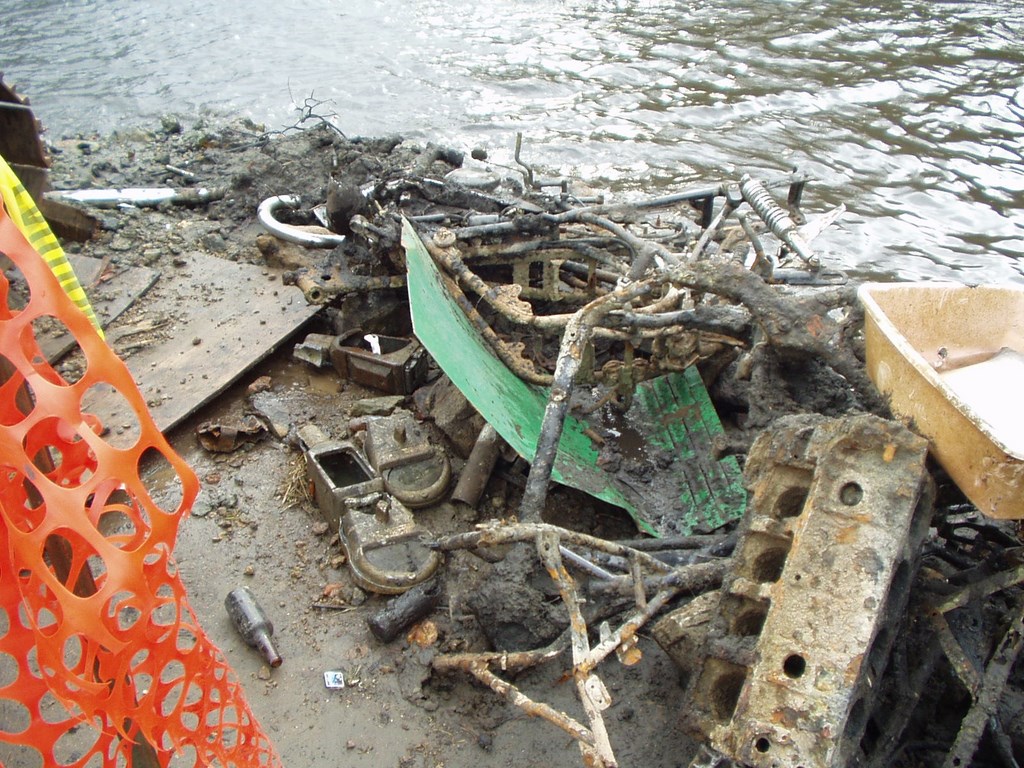When Ponds Go Bad

It’s a fact: A great many of the ponds and lakes in the western United States are simply not part of nature’s scheme.
Whether used for water retention, landscape beautification, fishing or swimming, these artificial, man-made bodies of water are inclined (and in some cases doomed) to be troubled, usually because of fertilizer- and pesticide-laced runoff from surrounding developed areas. Indeed, some of these problem watershapes are filled with just about the worst water the environment has to offer.
As our business has developed, a large portion of what we do has focused on setting things right in these troubled watershapes and returning the water to a state of aesthetic grace. It keeps us hopping: Few residential or commercial developments thrive when the water designed to attract business and tenants goes bad, so when we get the call, things are urgent.
We refer to what we do as “aquatic remediation,” which encompasses everything from redesign and reconstruction to start-ups and long-term maintenance.
SIZING UP
Of course, every body of water has its own character and idiosyncrasies, so a big part of what we do involves analyzing situations and tailoring our approaches to offer the most effective, feasible and appropriate combination of helpful measures.
That may call for removing infestations of plant material, dredging the bottom, re-engineering the hydraulics or even turning to chemical treatments to solve the problem. Whatever it takes, our job is to confront an unpleasant body of water and make it beautiful once again.
The first thing we do in assessing a troubled body of water is to find out what the client really wants. Water quality in ponds and lakes is a relative, subjective issue – quite a different matter from, say, a commercial swimming pool, where the parameters are clearly defined and mandated.
| The combination of high nutrient loads with inadequate circulation systems can lead to unholy messes in lakes and ponds of all sizes and descriptions. Our approaches to restoring these watershapes to acceptable conditions can take many forms, depending on the specific desires of the clients, local regulations and the system’s basic needs. |
We start by asking them about what they see as the pond or lake’s primary purpose, its reason for being there in the first place. This will yield a variety of responses, from pure aesthetics or flood control to support of wildlife habitat, fishing or even swimming. What they say helps us plan a remediation program with a desired outcome firmly in mind.
If what they’re after is an oversized swimming pool, for example, we’ll immediately think in terms of removing all vegetation and consider upgrading the circulation and/or filtration systems. If, by contrast, the body of water is seen as a way station for migrating waterfowl, then our approach would be entirely different.
The majority of these watershapes exist primarily for aesthetic purposes, but within the mission of restoring beauty is a host of significant variables. One of the big issues these days, for instance, is whether or not the clients or visitors who approach the water need to fear outbreaks of West Nile virus – a consideration that lends a tremendous sense of urgency to our efforts.
IT’S THE WATER
We take a look at algae and the degree to which the watershape has been infested by submerged emergent or surface plants. Then we assess factors that contribute to such problems and begin thinking about the removal of excess plant material, increasing the water depth and dredging muck (that is, accumulated sediment and/or organic matter) off the bottom. Further thought is given to the installation of aeration systems and turning over the water column more rapidly by installing new pumps and plumbing runs.
In many cases, our recommendations have to do with solving problems with source water – both the fill water as well as any surface water that might flow into the lake or pond. Very often, these measures take the form of changing the fertilizers used around the watershape as well as the methods with which they are applied. It might also entail some re-engineering or re-routing of the water source, the establishment of desilting basins that will allow sediments to settle out of solution or filtration of contaminants before the water feeds into the pond or lake.
Sometimes the water issues are hard to crack. A problem we’re encountering more and more, for example, has to do with water contaminated by the presence of large populations of waterfowl.
| Harvesting a lake or pond with big machines is a common approach to relieving the chokehold plant material can develop in some situations. In some settings, however, we need to moderate our efforts so that, as seen from home sites for example, basic lake aesthetics will not be disrupted for too long a time. |
Some migrating birds (such as Canada geese) tend to choose a body of water and basically use it as a semi-permanent residence. Bird droppings are a rich nutrient source for algae and other unwanted plants. Furthermore, the availability of these vessels – combined with human interactions (that is, artificial food sources) – disrupts migration patterns, which in turn creates all sorts of broader environmental problems.
In many cases where the waterfowl population exceeds watershape capacity, fecal/total coliform counts create public-interaction health concerns, while improper feeding by park patrons can contribute to outbreaks of avian botulism. The results in either case are extremely unpleasant.
In these cases, we need to work within local fish-and-game or fish-and-wildlife agencies’ regulations to find ways to reduce populations or, in extreme cases, remove the birds from the property. The environmental rules and regulations can be quite limiting and range from using specially trained dogs to chase the birds away to addling eggs (that is, physically disrupting nesting sites) or trapping the birds and relocating them.
And everything gets more complicated if the presence of the birds creates a public health hazard: If a lake becomes contaminated (that is, if there are elevated total or fecal coliform counts), regulators tend to be much more accommodating in what steps they’re willing to let us take.
CHANGING SITUATIONS
In our examinations of these bodies of water, we often find that basic engineering – combined with tightening regulations – is the underlying issue.
In many of these cases, the troubled lakes were built 50 or 60 years ago or more at a point before the areas around them saw any significant development. As conditions changed in and (more so) around the water, the original biosystems become unable to sustain and support good water quality. And where the original installers may have seen draining and dredging as simple corrective strategies, in many cases that’s no longer an option.
| When we’re working in the shallows or, indeed, up on shore, a device called an Aquamog is our plant-remover of choice. Its shallow draught gives it superb maneuverability, and it’s a real workhorse when it comes to clearing away unwanted plant material. |
Regulatory changes are also a factor. Not long ago, for example, you could buy bluestone (which is the old term for Copper Sulfate), tie it up in a burlap bag, attach a line to it, throw it off the back of a boat and pull it around a lake – a process that controls algae and vegetation quite effectively. This is no longer permitted in most states, and the same is true of using a broad range of chemical treatments commonly used in the days before we were as concerned about endangered species or habitat degradation.
These days, it’s almost always the case that when we set out to help a troubled pond or lake, we have to do so with small “footprints,” whether from a mechanical, chemical or physical perspective. This can make it tough, of course, when we’re confronted by a body of water that obviously requires massive intervention. So often, the most direct and cost-effective solution would be to drain the water, extract all plant material, clear away muck and revise the circulation system – but again, that’s not always an option.
| At times, there’s no alternative to draining away the pond or lake water and clearing away all the muck that accumulates in the bottom. This work is spectacularly messy and basically quite disgusting – definitely not for those with sensitive senses of smell. |
Unfortunately, in fact, there are many circumstances that take truly drastic approaches off the chart, including the size of the body of water, high water tables, the lack of a place to discharge the water, excessive lake depth, drought restrictions on refilling or the existence of environmental regulations aimed at protecting certain species of birds, insects, amphibians or fish. In such cases, we have to develop alternative approaches, which sometimes involve implementing a regular maintenance schedule for that specific body of water.
All of these conditions, possibilities, regulations, options and approaches are weighed, considered, accepted or rejected as part of an assessment process that takes place before we implement any direct measures on site.
MOWING THE POND
One of the most common solutions we implement involves removing some or all of the plant material present in the pond or lake.
Harvesting these plants falls into two specific categories: removing floating plants (such as hyacinths, mosquitofern or Duckweed) or extracting vegetation that is rooted to the bottom (such as Egeria, pond weed, naiads or other aquatic grasses). None of these is a problem until it reaches the infestation level, which can be loosely defined as a condition where plant material covers the majority of the surface of the water or effectively impedes water circulation. (Note that tules – that is, Bulrush or Cattails – are emergent plants that require other specialized equipment, to be discussed later.)
|
By-Products Harvesting plant material from ponds and lakes can create a tremendous amount of plant debris. We typically collect this material in one spot and let it dry out or dewater for a time (weather permitting) before running it through a machine known as a horizontal processor — basically a giant wood chipper. We’ll often mix the resulting material with dried debris from surrounding landscaping to create a rich mulch. Whenever possible, we’ll move it along to local farms as fertilizer or to nearby landscaped environments or nurseries where it serves as a terrific mulch. If those options aren’t available, this valuable material is shuffled off to a landfill as top cover. Dredged material is a much more complex (and expensive) story: Environmental regulations require that we dry it and submit it for a range of tests to assess its chemical makeup and water content before it can be distributed in a landfill. — G.F. |
Some instances of infestation can be fairly dramatic: We had a project not long ago in which the presence of the plants actually raised the water level and caused a breach in a levee! The consequences of these infestations just make matters worse: poor circulation, rising nutrient levels, insect infestation and/or turbid water are all common outcomes when plant material takes over.
And when we get the call to deal with these problems, the water has pretty well been overwhelmed by the challenge and the watershape is in truly desperate need of intervention in the form of plant abatement. Our preference is to use mechanical means, but chemical approaches are also a possibility depending upon the circumstances.
The tools of our trade for plant removal include floating aquatic plant harvesters. These are not unlike the traditional harvesters you might see working in a wheat or cornfield: They have big belts with sets of cutting teeth on three sides and will cut and collect vegetation as they blaze paths across the water’s surface. Depending upon what’s needed, these units can cut the plant material to various levels down to about seven feet deep.
The harvesters work very well with submerged plants, which typically have very soft tissues, but when we work with emergent plants such as cattails or bulrushes, which can be very tough by comparison, we’ll use another type of machine known as an Aquamog.
These are low-draft, self-propelled, multi-purpose barges that have an arm on the front that accommodates a variety of cutting and material-handling attachments. These units enable us to do quite a bit of work on the surface of the water – particularly in shallow areas along the shoreline where the toughest plant material so often takes hold.
HARVEST DYNAMICS
Harvesting ponds and lakes is much like maintaining and mowing a lawn: You plant the lawn, fertilize it and then mow it. Without fertilizer, the need to mow comes around less frequently.
With ponds and lakes, however, it’s hard to withhold nutrients, and there’s also the fact that a healthy biosystem will generate nutrients on its own and create conditions that tend to foster robust plant growth. In other words, plants in ponds and lakes naturally take up nutrients and clear the water, which allows greater penetration of sunlight that encourages plant growth – a helpful but difficult-to-control cycle.
This is why we so often see bodies of water that one year have only small amounts of plant material, but the next year we’ll see burgeoning, overwhelming growth spurts. The cause is simple: The plant population has reached a point of coverage at which it tips the scales from balance to infestation. Harvesting a pond or lake maintains or stabilizes this balance by removing the biomass (and accumulated nutrients) that would otherwise be and additional food source for the rapidly expanding plant population.
What this means in many cases is that the water must be “mowed” on a regular basis. Immediately thereafter, there is typically a drop in water quality in the form of nutrient-related turbidity. As plants reassert themselves, they take up the nutrients and water quality improves dramatically – and the cycle begins anew. That’s not a bad thing: The presence of the growing plants can be essential to maintaining relatively clear water in large systems.
| We’re called onto properties for a simple reason – that is, to intervene when ponds or lakes have lost their battles with plant materials and drastic measures must be taken. As these sets of before-and-after shots indicate, the results can be quite dramatic and remarkably satisfying to everyone involved. |
If you ignore the plants, they’ll top out, eventually retreat into the water and before long will fall to the bottom and contribute to the biomass. When you let this happen, you increase the chances of the water falling into anaerobic conditions in which there’s little or no dissolved oxygen. When this occurs the fish and other species begin dying, which will fast become a major problem. This is where the worst water quality problems occur: complete turbidity, rampant algae blooms and terrible odors.
In our region, which extends from Washington State through to southern California, we might need to harvest bodies of water twice or even up to four times annually. It is rarely the only measure we employ, but it is an extremely important tool in the vast majority of cases.
Lately, another factor has led some of our clients to stay well ahead of plant-related problems: Fear of the West Nile virus has made property owners particularly aware of excessive growth of specific plants generally known as tules, which include all species of cattails and bulrushes, because their presence has been associated with mosquito development and outbreaks of the illness.
COMBINED MEASURES
As a rule, we don’t approach aquatic remediation with chemicals as a primary tool, but there are cases where we’re forced to turn to algaecides and herbicides as a last resort.
In some cases, we use these materials because the client has a limited budget and chemical treatment is typically much less expensive than mechanical measures. It may be cheaper, but in the long run it can be less effective if it is used as the only remedial measure.
|
From the Depths One of the most frequent questions I’m asked about our work in aquatic remediation is a matter of simple curiosity: “What’s the weirdest thing you’ve ever found in the water?” I would love to have great answer, but the truth is we’ve yet to find any hidden treasures, historical artifacts or evidence of nefarious deeds – although we once found a dog’s skull. Then there was a project in San Francisco where we found a number of parking meters, cash registers, shopping carts, bicycles and motorcycle frames in a lake. (Public parks in particular tend to become dumping grounds for such things.) We also come across lots of common items including bottles and various containers that sometimes date back quite a while. We found a wallet once, vintage 1975, still stuffed with cash, credit cards and a driver’s license. For the most part, however, we find nothing at all, partly because the nature of the goop we collect from the bottom of a lake doesn’t incline anyone to sift through the smelly mess. It’s possible we’ve missed some treasures through the years, but it’s not something we think about too much. — G.F. |
Most states require that you have a pesticide license to apply these products. In addition, in the western states, you must also have a National Pollution Discharge Elimination System (NPDES) permit, which is both expensive and difficult to obtain. There are also federal regulations to consider; these mostly have had the effect of setting up strict usage guidelines or of banning substances that were once widely used in the control of aquatic plants and algae.
In our work, we use mainly chelated copper products for algae control as well as endothalols or salt-based herbicides. Each comes with specific label concerns and warnings, and it’s critical to know how to handle and apply every single product. This includes instructions related to mixing and dilution rates, which means you need to know the approximate volume of the given body of water – easier said than done in a large lake you didn’t install in the first place.
Wet dredging is another approach we use in certain circumstances. This is a costly proposition that involves the removal of large quantities of saturated material or sediments. This means you need to find a way to dewater the mud and muck on site – unless cost is no object and you can afford to haul it away wet.
In most of our projects, we end up taking a multi-pronged approach that includes harvesting, dredging and chemical treatment as well as a number of site-specific measures of the sort described above. As a rule, we accept the fact that one-technique approaches simply do not get the job done. Beyond this, developing and implementing maintenance programs will ensure that the cost of returning a site to its former grace is not seen as a short-term expense.
And make no mistake: Aquatic remediation is dirty, labor-intensive work that requires diligence and skill. We travel far and wide within our region to lakes and ponds large and small, and it’s not unusual with big ones for a harvester or Aquamog to be on site for several days or even weeks at a time.
It’s also deeply satisfying to pull troubled waters back from the brink: If we do our job and come up with the best set of solutions, we’ll be satisfied by the thought that we’ve transformed a dank, dying body of water into one that is attractive, safe and an asset to the surrounding area and community.
George Forni is president of Aquatic Environments, an Alamo, Calif.-based design, installation and service firm specializing in lakes, ponds and other large watershapes. He started his career in the waste- and reclaimed water industry in the mid 1980s. Before long, he became project manager for an aquatic service firm, for which he managed a number of projects in conjunction with the U.S. Army Corps of Engineers as well as in other regulatory agency-controlled jobs. His company now focuses mostly on the needs of large commercial clients in the Western United States.










